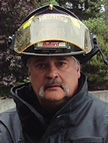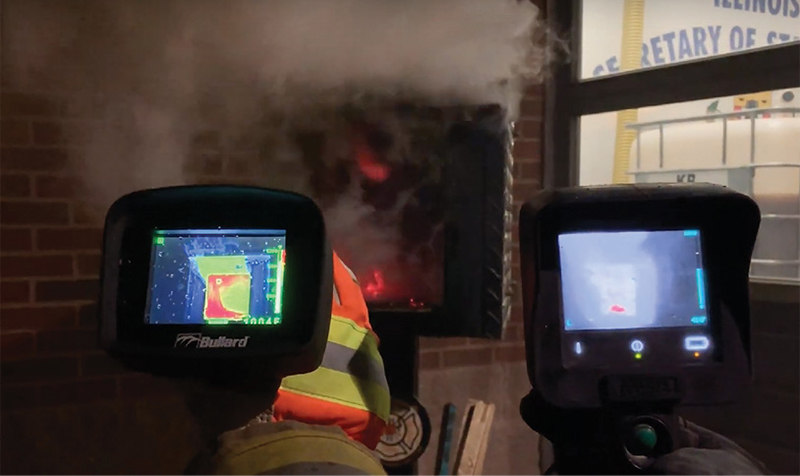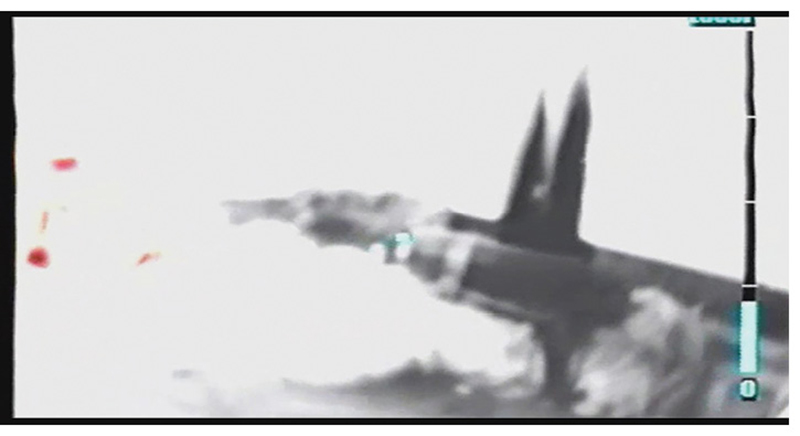
Thermal Imaging Manfred Kihn
When you look at how the fire service has progressed over the years, significant changes in policies, recommendations, and National Fire Protection Association (NFPA) standards have taken place for the betterment of the service.

My first self-contained breathing apparatus (SCBA) consisted of a steel tank, the most cumbersome regulator that you can imagine, and a face mask that made you feel like a scuba diver. We won’t mention how much it all weighed!
Just imagine the old black and white TV set that had all those knobs and dials for fine tuning and the rabbit ears on top for channels and picture reception. Now go your local electronics store and see what is in stock for the latest and greatest high-definition smart TVs. You will be amazed by today’s technology, improvements, and competitive pricing. The same can be said of the drastic changes and improvements in the world of thermal imagers (TIs).
For most equipment the fire service uses, there are guidelines for replacement, such as the following:
- Personal protective equipment (PPE)—10 years.
- Fire apparatus, depending on the type of department (i.e., frontline, engine, ladder, rescue)—eight to 25 years.
- SCBA—10 years.
- Fire hose—good until it fails the annual testing, or some departments operate on a six- to 10-year equipment replacement cycle.
However, TIs have no time frame. So, when do you replace them?
NFPA REQUIREMENTS
The current NFPA 1801, Standard on Thermal Imagers for the Fire Service—2021 edition, does not stipulate a replacement time or that a fire department purchase a certified TI. However, it does list the following key requirements:
6.1.2 All thermal imagers shall be capable of continuously operating for a minimum of 120 minutes in TI Basic mode without the power source being changed or recharged.
6.1.5 The thermal imager shall incorporate a sensor engine consisting of an infrared sensor with at least 76,800 imaging pixels.
6.1.7 All thermal imagers shall have a minimum video refresh rate of 25 frames per second in both the detector and the display.
6.6.1 The thermal imager shall have a viewing area that contains operational information for the thermal imager user.
6.6.4.1.4 Where the thermal imager is equipped with temperature measurement, the viewing area shall include a numeric temperature indicator, a temperature bar, or both.
6.6.4.2.2 Colorization shall overlay the grayscale thermal images produced by the thermal imager. Details within the thermal image and within the colorization area shall remain resolvable by the user other than at saturation.
6.6.4.2.3 The colors yellow, orange, and red shall have a corresponding, temperature-dependent change in hue as temperatures increase.
6.6.4.6.1 All thermal imagers equipped with a low sensitivity mode shall have a low sensitivity mode indicator.

1 The TI on the left is newer technology; the TI on the right is older technology. (Photo courtesy of Max Fire Box.)

2 The older technology distinguishes the firefighter only visible by his SCBA as he is lying on the floor next to the fire. (Photo courtesy of Bullard.)
CONSIDERATIONS
Older technology can definitely have its limitations when it comes to conducting a victim search or ensuring the safety of a crew during an initial fire attack. For example, older technology may not be able to accurately read convection air currents or locate a means of egress in case of a bailout. It’s important for first responders to have access to the most advanced technology possible to effectively and safely carry out their duties. Consider the following:
- What is your TI’s refresh or update rate? How quickly does your TI’s shutter inside refresh when you are scanning around and it switches between high and low gain modes (i.e., 25 Hz to 60 Hz)?
- What is your TI’s screen resolution: 80×60, 160×120, 240×180, 320×240?
- Does your TI screen show detailed convection heat currents?
- Does your TI screen show transparent yellow, orange, and red colorization?
- What is the run time of your TI? How long do your batteries last?
- Is your TI equipped with any additional color information modes? Are they confusing?
- Has your department ever received any formal TI training not only on the TI but on the various applications it can be used for?
- When did your department last upgrade the TI equipment that you are currently using?
TI manufacturers have come a long way in improving their technology; more importantly, pricing has become very competitive. When you think it is time for replacement, reach out to your local distributor or manufacturer representative for a presentation on the latest technology and what the company has to offer. Establish a committee and create an evaluation guide form to follow as to what it is that you are looking for in a TI. All TIs look great in a boardroom setting, but get them into high heat where the action is, and things will change.
If missing important detail in your current TI leaves your crews in danger, it is time to upgrade your TI technology.
Manfred Kihn is a 19-year veteran of the fire service, having served as an ambulance officer, emergency services specialist, firefighter, captain, and fire chief. He has been a member of Bullard’s Emergency Responder team since 2005 and is the company’s fire training specialist for thermal imaging technology. He is certified through the Law Enforcement Thermographers’ Association (LETA) as a thermal imaging instructor and is a recipient of the Ontario Medal for Firefighters Bravery. If you have questions about thermal imaging, you can e-mail him at manfred_kihn@bullard.com.

